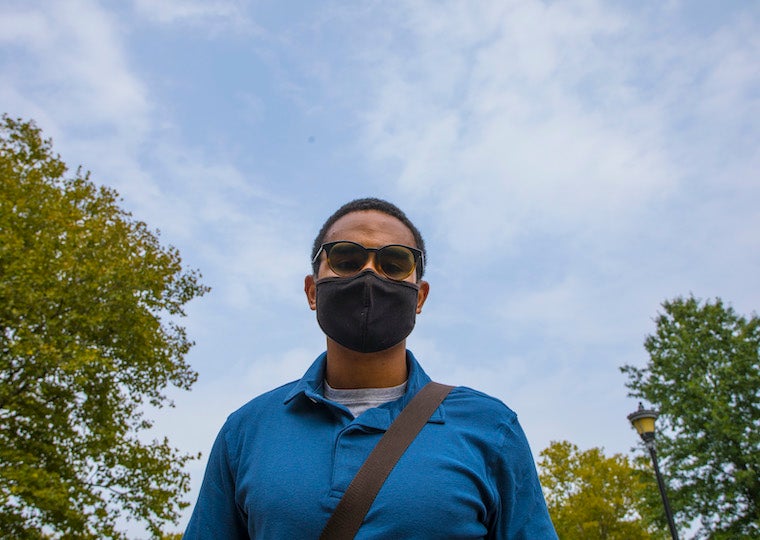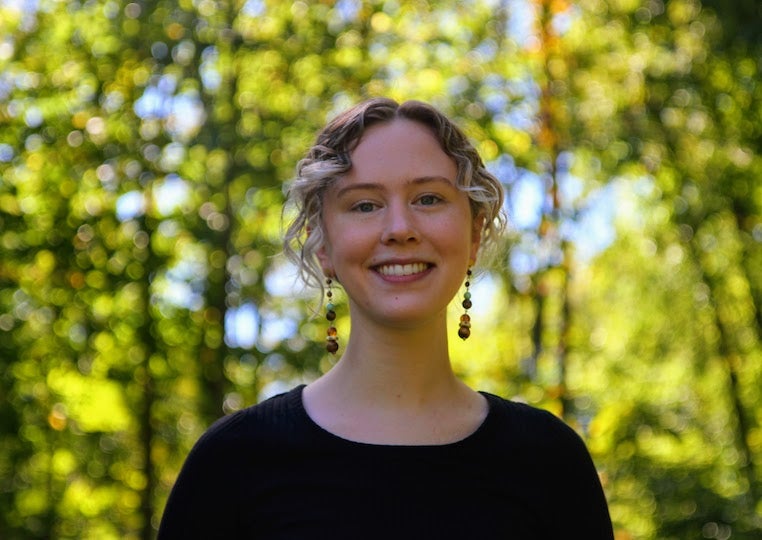Winter Term: Psychological Factors on COVID-19
October 1, 2020
Yvonne Gay

The Arboretum in Oberlin.
Photo credit: Arisa Williams ’06
Many areas of the country saw significant drops in pollution levels when stay-at-home orders were put in place several months ago. The effects on the atmosphere suggested to Devin Williams ’21 that there might be other factors to investigate. He joined a team of students who assisted Professor of Psychology and Environmental Studies Cindy Frantz in a project that would lead to the study of COVID-19 on psychological factors.
The student group consisted of two teams. Williams and Alexa Myles ’21 helped with a literature review for a grant project Frantz is working with the See Change Institute to write. If approved, the study Frantz plans to conduct would determine the effects of COVID-19 on people’s sense of collective efficacy about climate change.

Williams and Myles also engaged directly with members of See Change. In their efforts to build the project’s description, the pair collected and reviewed nearly 200 papers and articles related to COVID-19 and climate change. This included current evaluations of climate change and COVID-19, individual and collective risk perception of threats, and increases and decreases in efficacy behavior of individuals.
“The most surprising aspect of media analysis for me arose in the form of a recent Gallup poll published in April 2020,” says Williams, a psychology major. “I was pleasantly surprised to see that two-thirds of U.S. adults believe that the federal government is doing too little to reduce the effects of global climate change. I believed there would actually be more contention and disputes concerning the effects of climate change and government intervention among the varied demographics of the U.S. hosts, especially in today’s climate,’’ says Williams.

‘‘Even though this is simply a poll, it was nice to see that more than half acknowledge that the government needs to do more to combat climate change. For me personally, it boosted my morale when it came to this research.”
During the August project, a pilot experimental survey of 167 participants was also conducted. Participants were required to read articles that either pertained to topics entailing COVID-19 and climate change, or articles that addressed no such subject matter. The results indicated a higher level of personal and collective response efficacy, and behavioral intentions, which meant that participants were more likely to indulge in behaviors that combat climate change both on a personal and group level, explains Williams.
“Protection Motivation Theory posits that people take action to protect themselves based on their threat appraisals and their coping appraisals,” says Myles, a psychology major. “People’s experience of climate change has the potential to change their threat appraisals and coping appraisals related to climate change. According to the PMT, this will result in changes in policy support and behavior.’’
Myles is on campus this semester and is working with See Change Research Director Daniel Chapman. The pair will put together a literature review on the latest insights from health psychology and sociology on vaccine-related attitudes, uptake, and (un)successful intervention approaches. She will graduate at the end of the semester. Williams is also working with Frantz.
"It’s one thing to read about theoretical concepts in a social psychology text,” says Myles, "but to see them applied to determine what best motivates action to effectively curb the progression of the most consequential global crises of our time, emphasizes their significance, and therefore the field’s significance in society.”
You may also like…
Josh Nolan Named Vice President, General Counsel, and Secretary at Oberlin
Distinguished attorney brings extensive experience in higher education law.
Learning by Teaching: Oberlin Students Share Global Music with Young Learners
College and Conservatory students in PACE 103 prepare local children for an immersive community concert at Oberlin.
Nuiko Wadden ’02 Joins Oberlin Conservatory Faculty as Assistant Professor of Harp
The versatile musician brings extensive opera, orchestral, and contemporary music experience to her role


